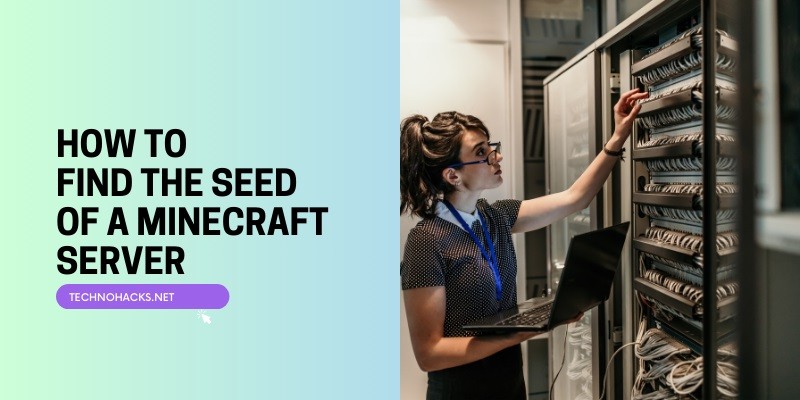Last Updated on May 5, 2025 by Jim C.
Minecraft’s vast, procedurally generated worlds are created using a unique seed – a string of numbers or text that determines the layout of the terrain, biomes, structures, and more. While finding the seed of a single-player world is straightforward, discovering the seed of a multiplayer server can be more challenging, especially if you don’t have administrator privileges. This article will explore various methods to find a Minecraft server’s seed, along with some important considerations and potential risks.
Minecraft Seeds
Before diving into the methods of finding server seeds, it’s crucial to understand what Minecraft seeds are and how they work. A seed is essentially the starting point for Minecraft’s world generation algorithm. When you create a new world, Minecraft uses the seed to determine every aspect of the world’s layout, from the placement of mountains and oceans to the locations of villages and dungeons.
Seeds can be:
- A string of numbers (e.g., 12345678)
- A text phrase (e.g., “Minecraft”)
- Left blank, in which case Minecraft generates a random seed
Importantly, the same seed will always generate the same world, allowing players to share interesting world layouts or recreate specific environments.
Methods to Find the Seed of a Minecraft Server
1. Using Commands (for players with operator status)
If you have operator (OP) status on the server, finding the seed is simple:
- Log into the server
- Open the chat window (usually by pressing ‘T’)
- Type
/seedand press Enter
The seed will be displayed in the chat, and you can click on it to copy it to your clipboard.
2. Accessing Server Files (for server owners)
If you have access to the server files:
- Locate the server files on your computer
- Find and open the
server.propertiesfile - Look for the line starting with
level-seed= - The value after the equals sign is your server’s seed
3. Using Seed Crackers (for players without operator status)
For players without admin privileges, finding the seed becomes more challenging but not impossible. Seed cracking involves using specialized tools to reverse-engineer the seed based on the world’s features. Here’s how it works:
- Install a seed cracking mod like SeedcrackerX (compatible with Fabric 1.16.5 to 1.20.1)
- Join the server and explore to find specific structures (e.g., desert temples, igloos)
- The mod will collect data from these structures
- Once enough data is gathered (usually 5-6 structures), the mod will attempt to calculate the seed
- If successful, the seed will be displayed in the game chat
It’s important to note that seed cracking can be resource-intensive and may require powerful hardware or parallel computing methods.
Considerations and Risks
While finding a server’s seed can be exciting, there are several important considerations and potential risks to keep in mind:
- Server Rules: Many servers prohibit the use of mods or explicitly forbid attempts to discover the seed. Violating these rules could result in a ban.
- Ethical Concerns: Some players and server administrators consider seed cracking to be cheating, as it can provide unfair advantages in gameplay.
- Technical Risks: Using third-party mods or tools always carries some risk. Ensure you’re downloading from reputable sources to avoid malware.
- Anti-Cheat Detection: Some servers use anti-cheat plugins that may detect seed-cracking attempts, potentially resulting in automatic bans.
- Changing Seeds: Server administrators can change the seed at any time, rendering your discovered seed useless.
- Version Differences: Seeds may produce different results in different Minecraft versions, especially between Java and Bedrock editions15.
The Debate: To Seed or Not to Seed
The Minecraft community is divided on whether players should seek out server seeds. Some argue that knowing the seed enhances the gameplay experience, allowing for more strategic base placement or efficient resource gathering. Others contend that it ruins the spirit of exploration and discovery that makes Minecraft special.
Server administrators must weigh these considerations when deciding whether to make their server’s seed public. Some choose to openly share the seed, while others keep it strictly confidential to maintain the element of surprise for their players.
Alternatives to Finding the Seed
If you’re unable to find the server’s seed or are concerned about the ethical implications, consider these alternatives:
- Explore Naturally: Embrace the spirit of adventure and explore the world without prior knowledge.
- Use Mapping Tools: Many servers allow the use of mapping tools like Dynmap, which can help you navigate without revealing the entire world layout.
- Community Collaboration: Work with other players to map out the server world collectively, sharing discoveries and creating a communal knowledge base.
- Request Specific Biomes: If you’re looking for a particular biome or structure, ask the server admin if they can provide coordinates without revealing the seed.
Conclusion
Finding the seed of a Minecraft server can be a complex process, especially for players without administrative access. While there are methods available, ranging from simple commands to advanced seed-cracking techniques, it’s crucial to consider the ethical implications and potential risks involved. Ultimately, the decision to seek out a server’s seed should be made carefully, taking into account server rules, community norms, and gameplay preferences. Whether you choose to uncover the seed or embrace the unknown, remember that the true joy of Minecraft lies in the experiences you create and the communities you build along the way.

